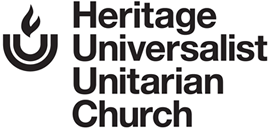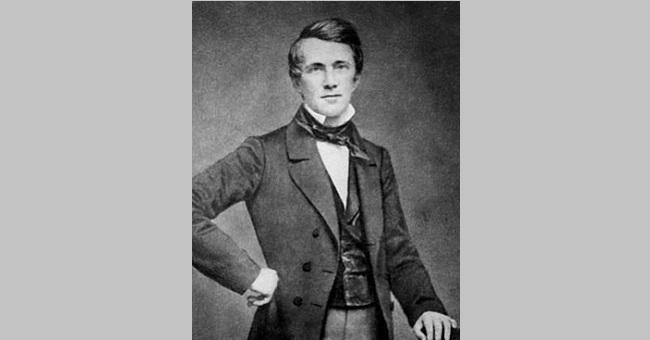by Mike Roberts, Church Historian
We left our story last month as George Rogers, pastor of our First Universalist Society, headed out to the backwoods of America to once again take up his calling as an itinerant minister of the Universalist gospel. But before Rogers left our congregation, he did arrange for a replacement in the pulpit. That man was William West.
In 1837, West accepted the challenge and helped to strengthen our church in many ways. Under his leadership, a Sunday School was opened, lectures were offered related to the secular issues of the day, and Sunday services often saw hundreds in attendance. However, after several years of dedicated service to the church, both West and his wife became seriously ill. They took a sabbatical and returned to their native Glasgow, Scotland, hoping to cure their illnesses – and indeed, they did eventually return to Cincinnati. Unfortunately, within two months, Mrs. West died. William was devastated, and resigned from the pulpit. He lived out his life in Cincinnati, but never returned to the ministry.
The next minister to accept the challenge of guiding our church was John Gurley. Rev. Gurley was a native of Connecticut who originally had trained as a hatter. Gurley’s first pastorate was in Methuen, Conn., but he was lured to the Queen City of the West by the business opportunity of purchasing The Star in the West, the regional Universalist newspaper.
Gurley quickly established himself as a feisty debater who stood by his belief in universal salvation and actively argued the issue with many of the leading Protestant ministers of the day. Otherwise, however, Gurley was a traditionalist who did not always endear himself with his more progressive Universalist brethren. This led to even more with his colleagues than he had with those of other faiths – but it was good for business. At the height of his notoriety, The Star in the West had a circulation of over 10,000.
Under Gurley’s pastorate with us, which began in 1839, our First Universalist Church prospered as well. Membership grew to the point that by 1840, 117 members were on the rolls and attendance at Sunday services often numbered more than 200. A new church was built on the site of the Mechanics Institute, and for the first time the congregation truly had a long-term home, taking up residence on Walnut near Third Street.
The new house of worship was described as having “large and comfortable pews on a heavily carpeted floor, shuttered windows and a singing gallery barely sufficient for the one hundred member choir, and gas lighting…” To generate extra revenue, several storefronts were made available for rent on the ground floor.
The church continued to grow under Gurley’s leadership, with membership reaching nearly 200 by the time he left our church in 1844. At that time, Gurley chose to follow the same siren call that had drawn George Rogers from us to rural America – the life of the itinerant preacher. Unfortunately, Gurley’s health failed him at this time, and he sold the newspaper and became a farmer.
However, a man of his drive could not sit on the farm long. After returning to good health, Gurley ran for U.S. Congress, and after suffering an initial defeat, was later elected for two terms, serving between 1859 and 1863. From 1861-1863, when Congress was not in session, Gurley served as an aide-de-camp on the staff of General John C. Fremont in the Civil War.
After losing his re-election bid in 1863, Gurley was appointed by President Lincoln to serve as the first Governor of the newly established Arizona Territory. Sadly, he suffered an attack of appendicitis and died at the age of 49 on his farm before he could assume that office. He is buried in Spring Grove Cemetery.
This is the third of a series on the origins of our church in Cincinnati. The final article next month will deal with the religious climate in Cincinnati during these years.
Image: John Addison Gurley.
Image source: Wikipedia.

